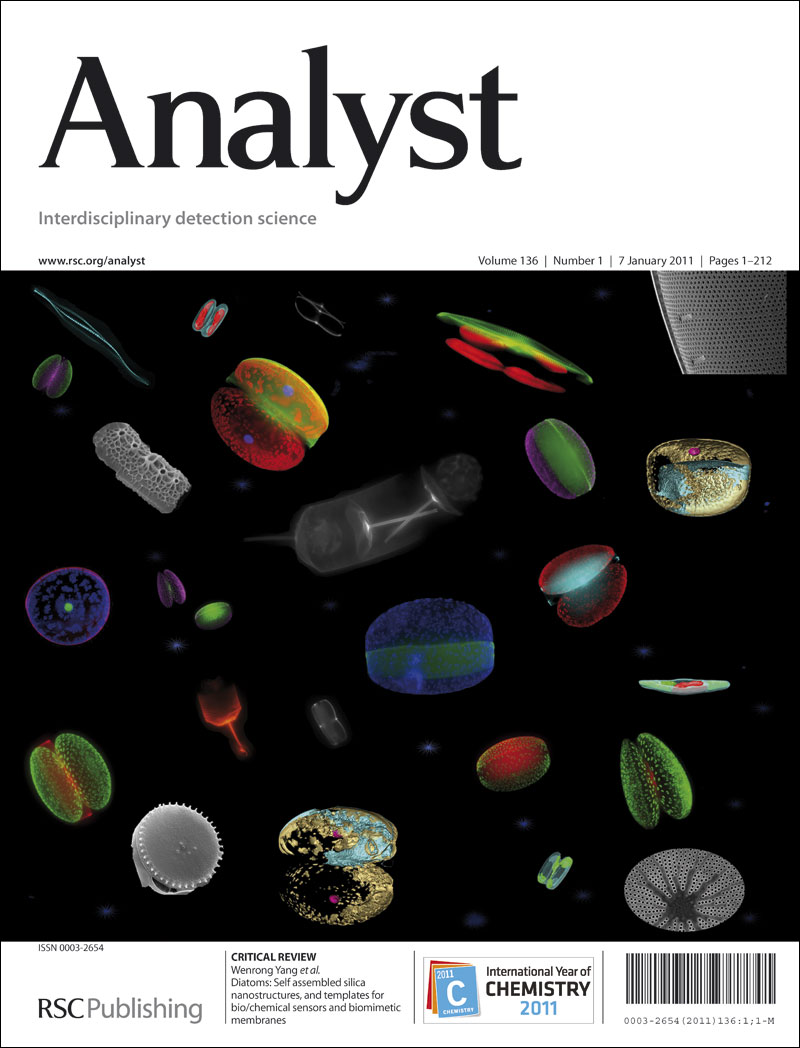表面电荷调节介导二氧化硅纳米通道中的异常离子传输
IF 3.6
3区 化学
Q2 CHEMISTRY, ANALYTICAL
引用次数: 0
摘要
为了加深对二氧化硅纳米通道内电动力学输运的表面电荷调节的理解,研究了一种微流控-纳米流控混合装置对多种离子输运的影响。在16纳米深度的三个纳米通道将两个微流体通道连接起来,作为实验和建模数据的流体和电解质储存器。表面电荷调节取决于水合阳离子的大小,阴离子的类型,以及带负电荷的二氧化硅纳米通道的电解质浓度,并观察到异常传输。本文报道的结果为纳米通道内离子类型和电解质浓度对表面电荷调节的影响提供了新的见解,并随后提出了通过调整电解质溶液组成来操纵纳米通道内表面电荷和随后的电渗透流动的可能性。本文章由计算机程序翻译,如有差异,请以英文原文为准。
Surface Charge Regulation Mediates Anomalous Ion Transport in Silica Nanochannels
A hybrid microfluidic-nanofluidic device was evaluated for the transport of a variety of ions with the purpose of enhancing the understanding of surface charge regulation for electrokinetic transport within silica nanochannels. A bank of three nanochannels at 16 nm depth connect the two microfluidic channels that act as fluid and electrolyte reservoirs for the experimental and modeling data reported in this work. Surface charge regulation was noted to be dependent on the size of the hydrated cation, type of anion, and the electrolyte concentration for the negatively charged silica nanochannels with anomalous transport observed. The results reported here provide new insight to the impact of surface charge regulation as function of ion type and electrolyte concentration within nanochannels and subsequently raises the possibility of tuning electrolyte solution composition to manipulate surface charge and subsequent electroosmotic flow within nanochannels.
求助全文
通过发布文献求助,成功后即可免费获取论文全文。
去求助
来源期刊

Analyst
化学-分析化学
CiteScore
7.80
自引率
4.80%
发文量
636
审稿时长
1.9 months
期刊介绍:
"Analyst" journal is the home of premier fundamental discoveries, inventions and applications in the analytical and bioanalytical sciences.
 求助内容:
求助内容: 应助结果提醒方式:
应助结果提醒方式:


